
The Bottom Line
Introduction, Specifications, and Pricing
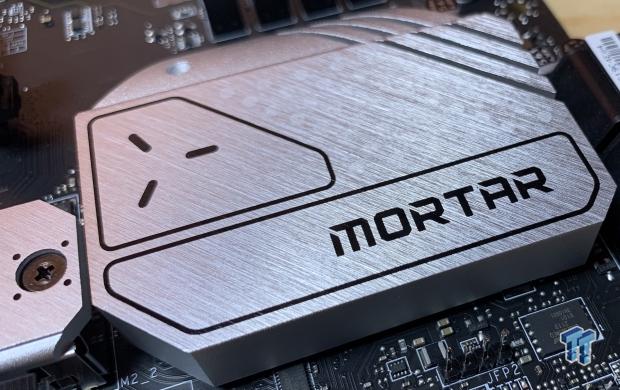
Back before Christmas, the leaks started flowing on the rest of the 6 series chipset family, when the boards would be released and the features set when compared to Z690. Luckily enough, we were chosen to have a sample sent over from MSI in the form of their B660M Mortar. The Mortar has several versions at launch. The Wi-Fi DDR4 is their top offering, with a second model without Wi-Fi coming in a bit cheaper; they sent the former for review.
B660 specs out slightly different than Z690. That said, we do have the same socket, LGA1700, to start things off. Memory support does include DDR5 for some platforms; the MSI B660M Mortar is a DRDR4 platform with support for 128GB over four slots. Memory overclocking, including XMP, is supported on this motherboard.
PCIe layout includes a single x16 Gen 5 slot at the top, two more PCIe slots from the chipset can be found at the bottom of the board, while NVMe storage enjoys the top slot carrying CPU lanes at Gen4 and the bottom M.2 also Gen4, from the chipset. SATA is still available for legacy storage needs, with six ports available internally.
Expansion is powered by a host of USB ports, four 2.0 can be found on the rear I/O next to three USB 3.2 Gen 2 and one Gen2x2. 2.5Gbe makes an appearance on this budget board along with Wi-Fi 6.
Pricing
Pricing for the MSI MAG B660M Mortar Wi-Fi DDR4 is expected to be around $200.

Packaging, Accessories, and Overview
Packaging and Accessories
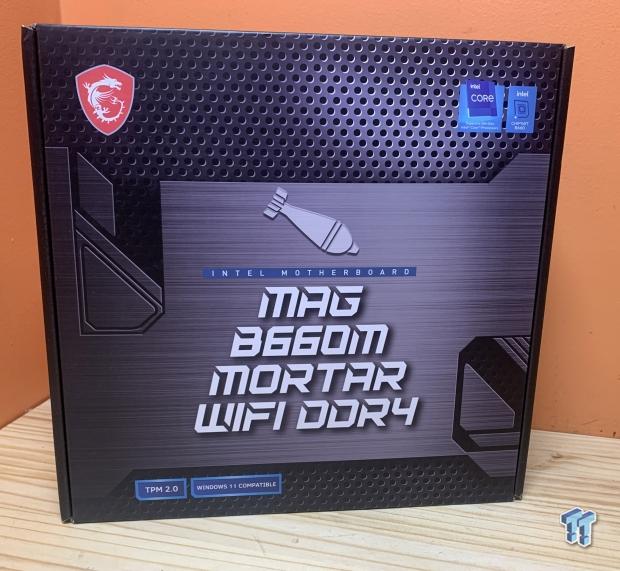
Packaging falls in line with the theme of the board. We have imaging for the Mortar sub-branding and MSI gaming logo top left. Chipset and CPU support are listed top right.
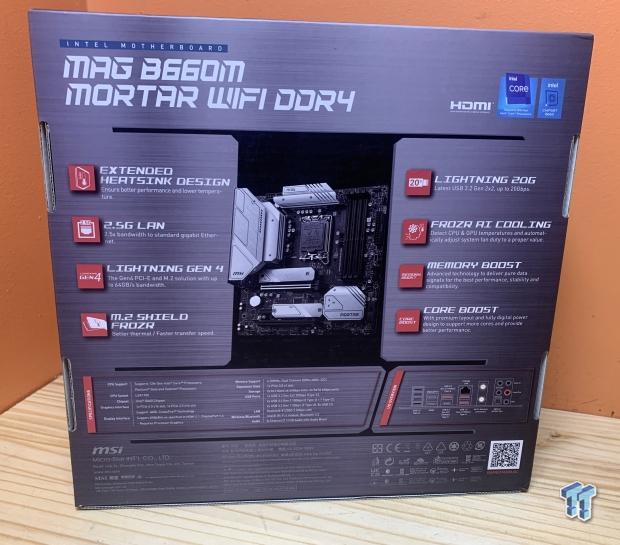
The rear of the packaging includes features above and specs right below, including a rear I/O layout.

Accessories include a Wi-Fi antenna, SATA cables, and stickers to customize your board.
MAG B660 Mortar Overview
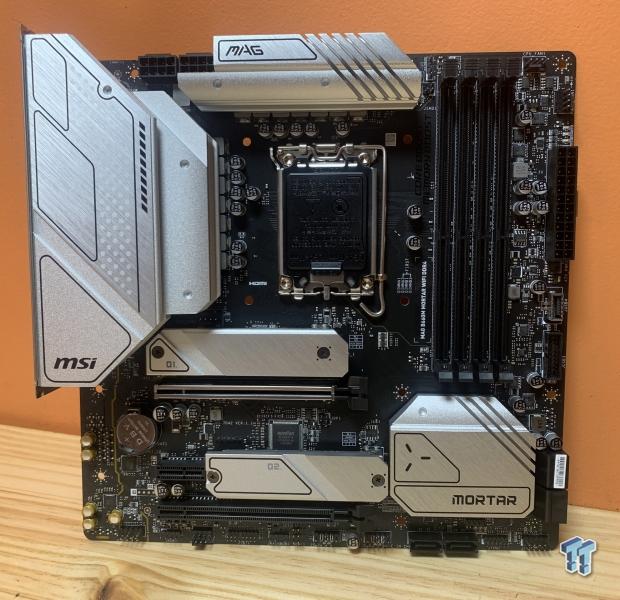
The Mortar is a M-ATX platform with aluminum heat sinks covering the most important parts of the board. We have four memory slots top right, and one PCIe Gen5 slot shielded in the middle of the board. An additional set of PCIe slots are available near the bottom of the board, utilizing chipset lanes.
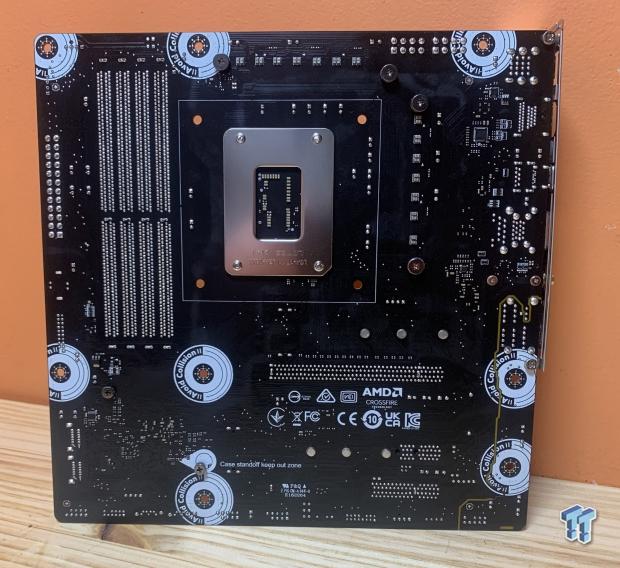
The back of the board is mostly a blank slate, with a few ICs near the rear I/O.
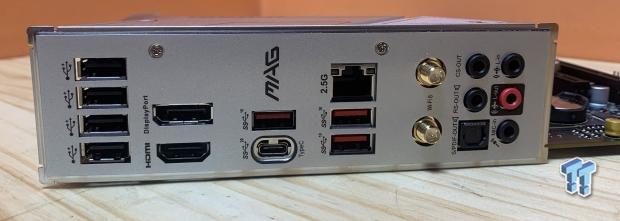
Rear I/O includes a set of USB 2.0 ports at the top, followed by DP and HDMI outputs. Gen2x2 is the USB-C port, while the additional ports in red are Gen 2 USB 3.2. Wi-Fi is available at the bottom of the board, along with 2.5Gbe.
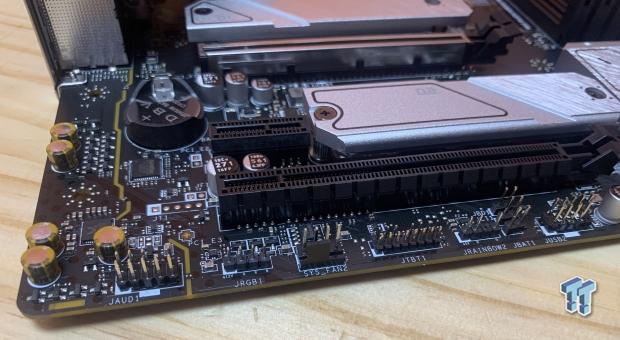
Running around this platform, we start at the bottom with front panel audio, RGB, and fan headers. There is also a Thunderbolt header in a pin form factor followed by USB 2.0.
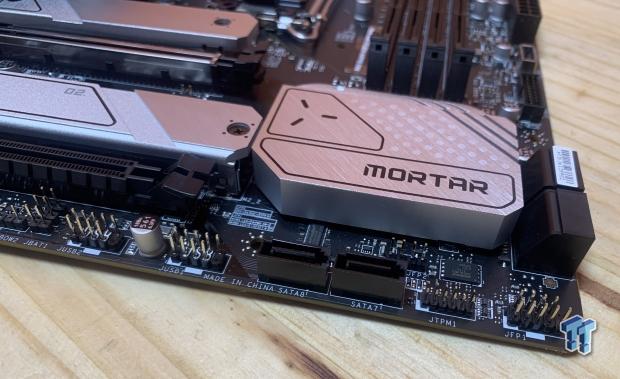
MSI has placed two SATA ports at the bottom of the board next to the TPM and Front panel headers.
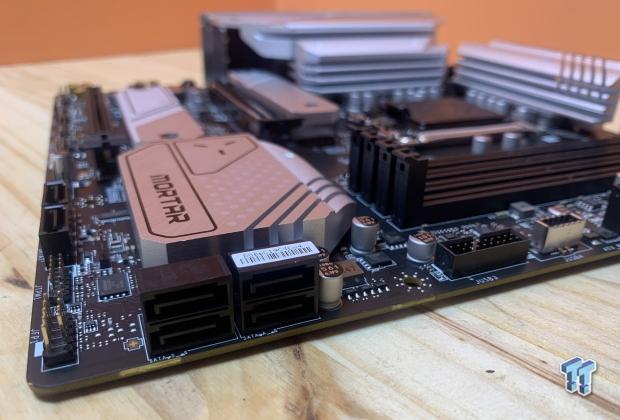
Around the corner, we have the other four SATA connections, along with USB 3.2 Gen 1 and Gen 2 headers.
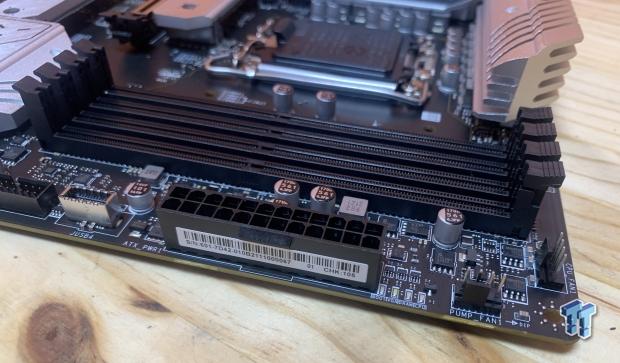
Rounding out this side, we have the 24-pin power and additional fan headers.
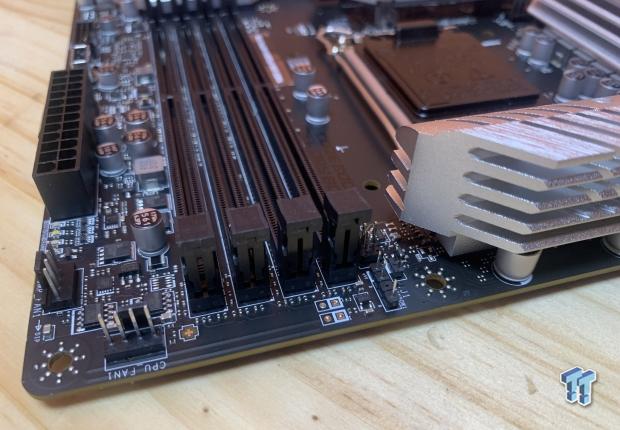
Memory slots and another ARGB header at the top.
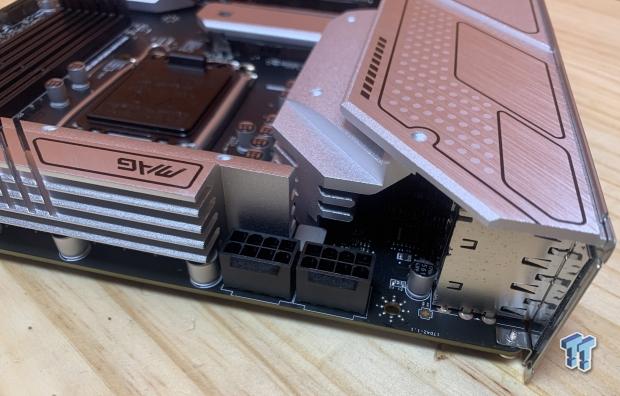
Last, two 8-pin power connections.
UEFI, Software and Test System
UEFI
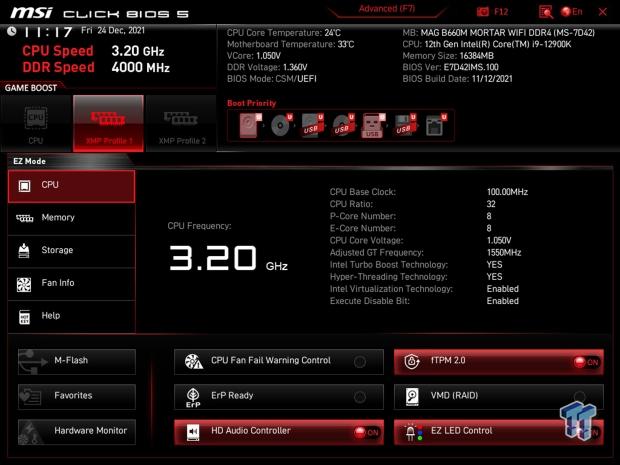
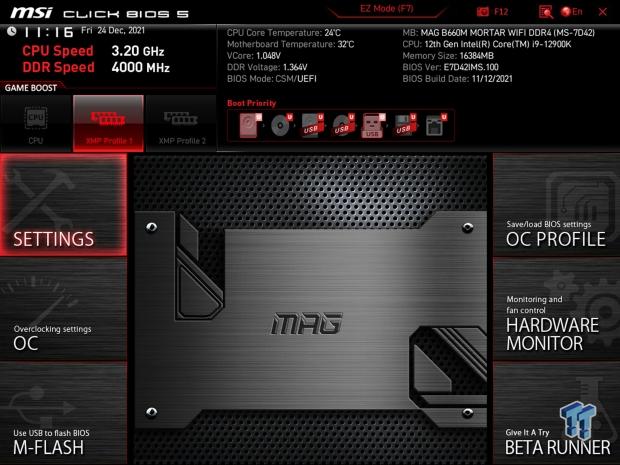
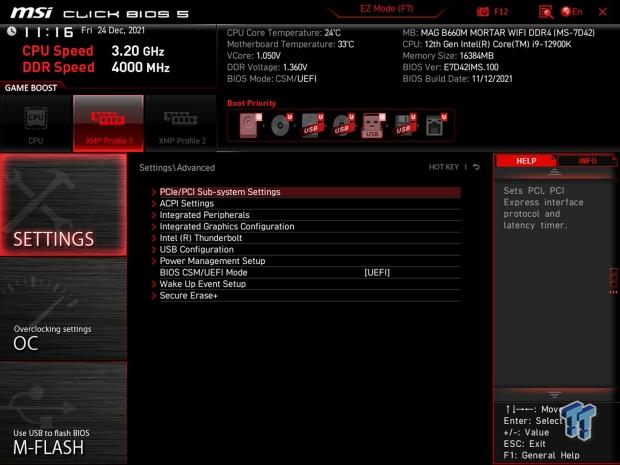
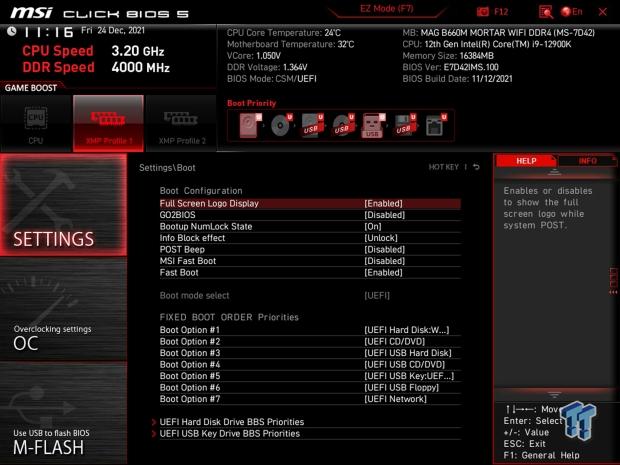
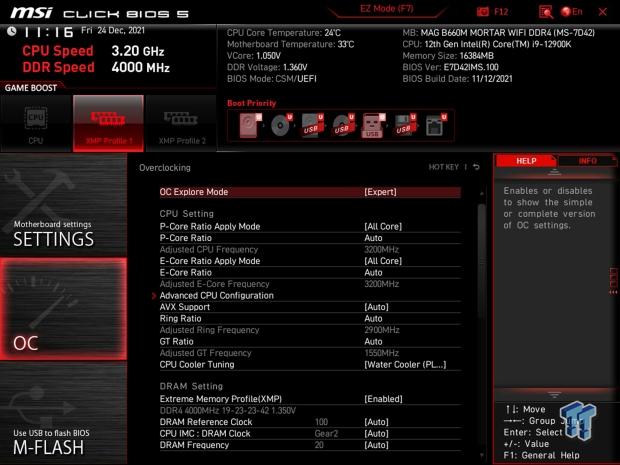
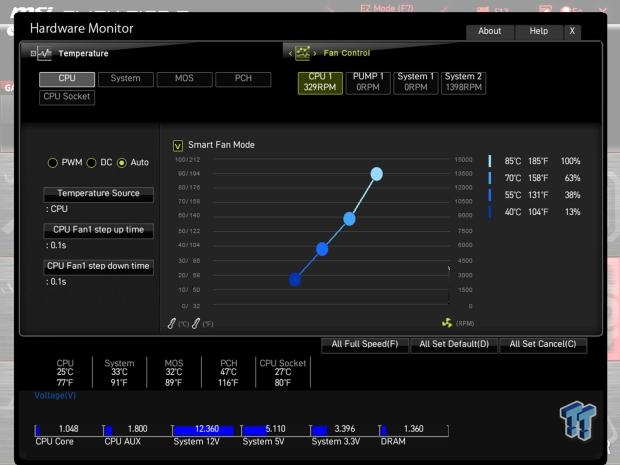
BIOS is Click BIOS 5. To the left, we have an EZ mode menu for quick changes of CPU, Memory, and storage configurations, while down below, you can get to LED, VMD, and TPM settings.
Switching over to advanced mode, you get to the standard menus for PCIe, NVMe, and CPU settings. OC also has its own section complete with clock and voltage control. Further, MSI includes a hardware monitor that allows you to tune your fans and the curve at which they run.
Motherboard Software
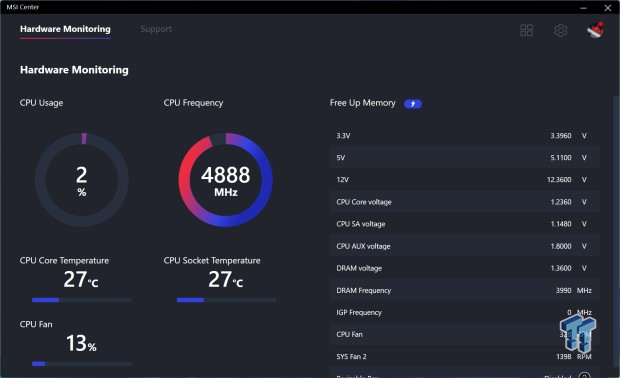
MSI Center is the software for this board. This includes hardware monitoring for the CPU and Memory, including voltages and temperatures.
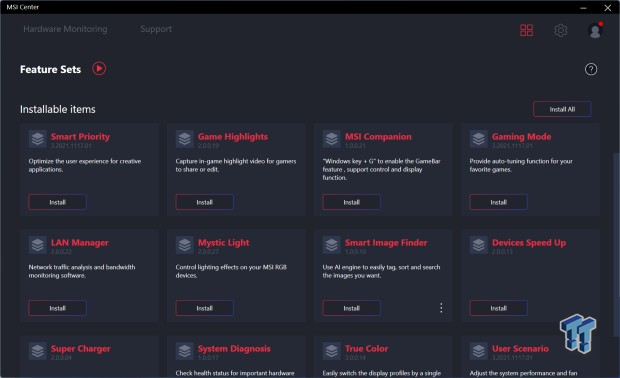
You can add modules to MSI Center, some seen here to add features to the platform.
Motherboard Testing Supporters
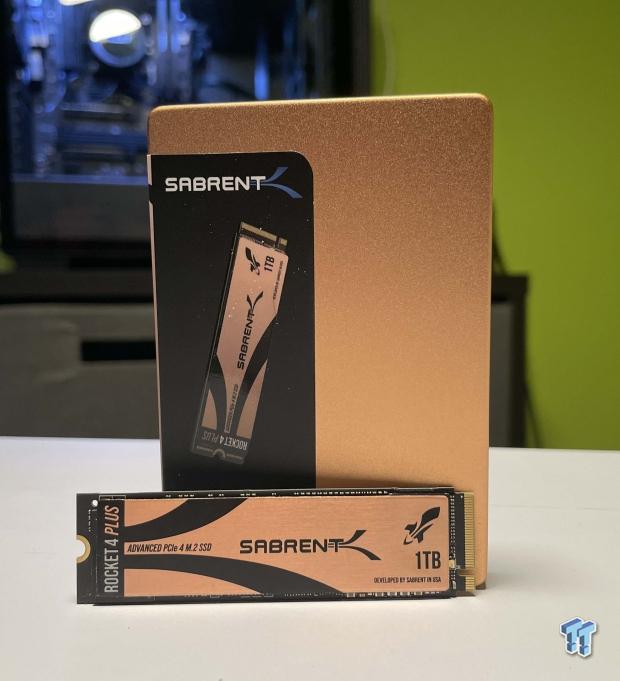
Sabrent supports our storage testing with the Rocket 4 Plus.
TweakTown Intel Motherboard Test System
- CPU: Intel Core i9 12900K
- RAM: Crucial DDR5 5200MHz 32GB CL38 (buy from Amazon)
- OS Storage: Sabrent Rocket 4 Plus 1TB (buy from Amazon)
- Power Supply: ASUS Thor 1200W (buy from Amazon)
- OS: Microsoft Windows 11 (buy from Amazon)
Cinebench R23 and AIDA64
Cinebench R23
Cinebench is a long-standing render benchmark that has been heavily relied upon by both Intel and AMD to showcase their newest platforms during unveils. The benchmark has two tests, a single-core workload that will utilize one thread or 1T. There is also a multi-threaded test that uses all threads or nT of a tested CPU.
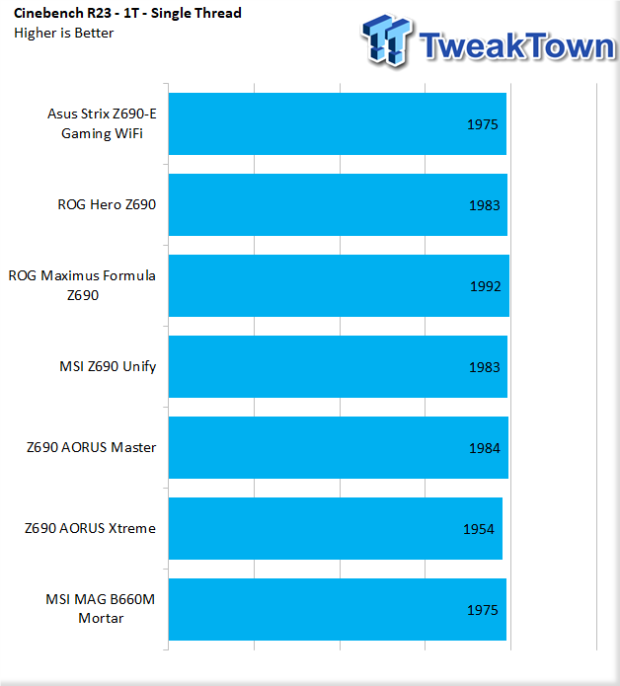
Starting our testing of the B660M Mortar, we grabbed 1975 from R23 in 1T.
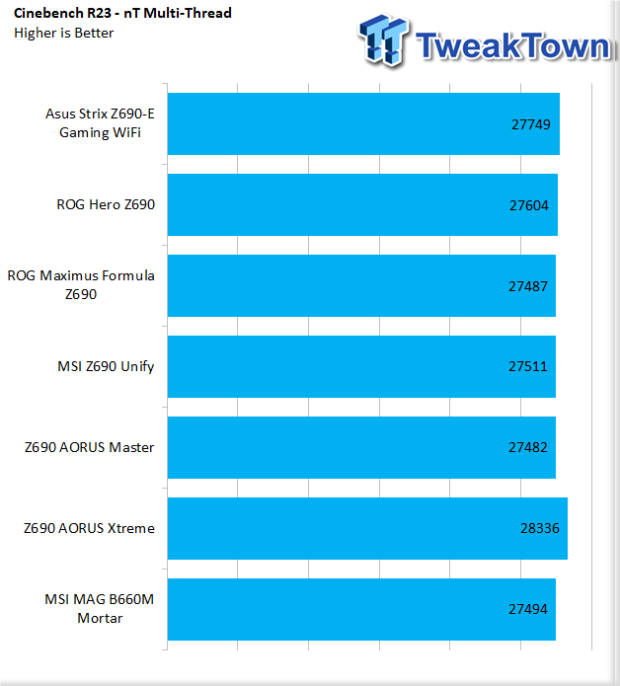
nT showed 27494, on par with most of our Z690 platforms tested.
AIDA64 Memory
AIDA was recently updated to version 6.6, which improved performance in both AES and SHA3 workloads for Alder Lake CPUs. You will notice this performance jump in the charts below when compared to any previous Z690 reviews.
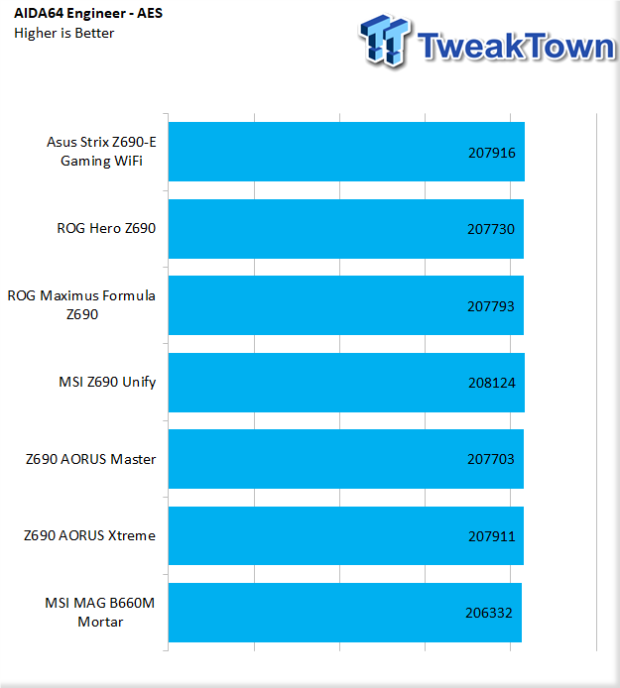
In AES, we see 206332, just under what we get from the list of Z690 boards above.
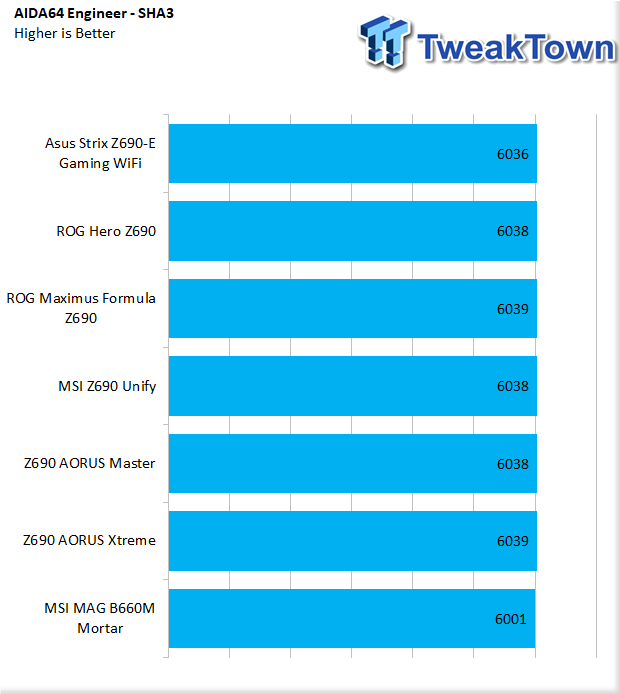
SHA3 tapped in at 6001 for the B660, 37 points under the average for Z690.
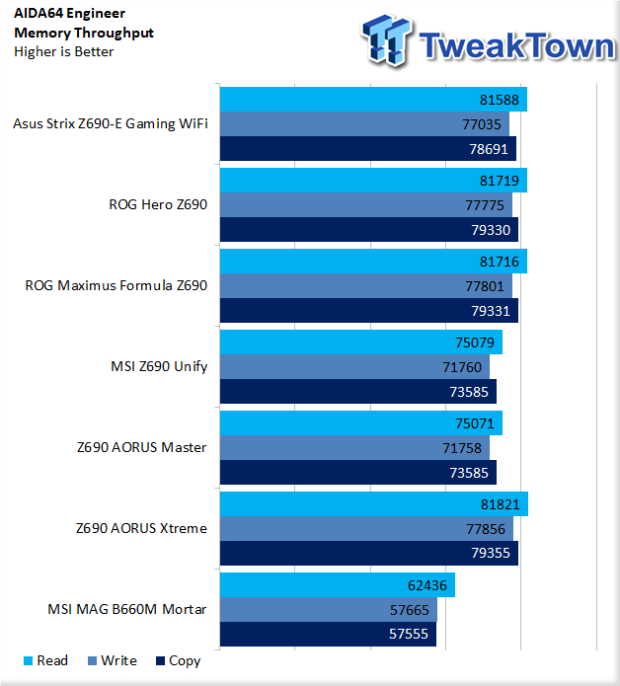
Memory throughput was a bit under our Z690 platforms. Of course, this is expected comparing DDR4 to DDR5.
PCMark10,3DMark and CrossMark Benchmarks
PCMark 10
PCMark is a benchmark from UL and tests various workload types to represent typical workloads for a PC. Everything from video conferencing, image import, and editing, along with 3D rendering, are tested.
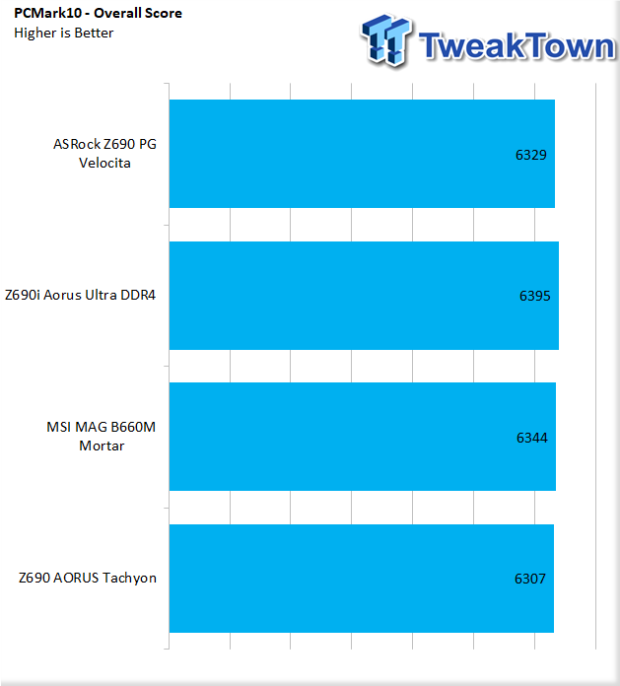
Overall, we see 6344 from the B660. This is on par with the Z690 platforms tested alongside it.
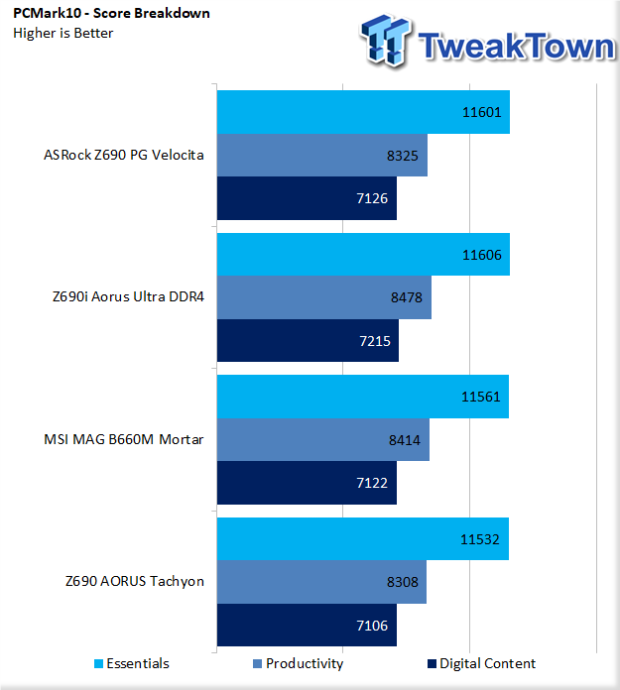
Score breakdown shows the B660 right with the Z690 boards through each workload.
CrossMark
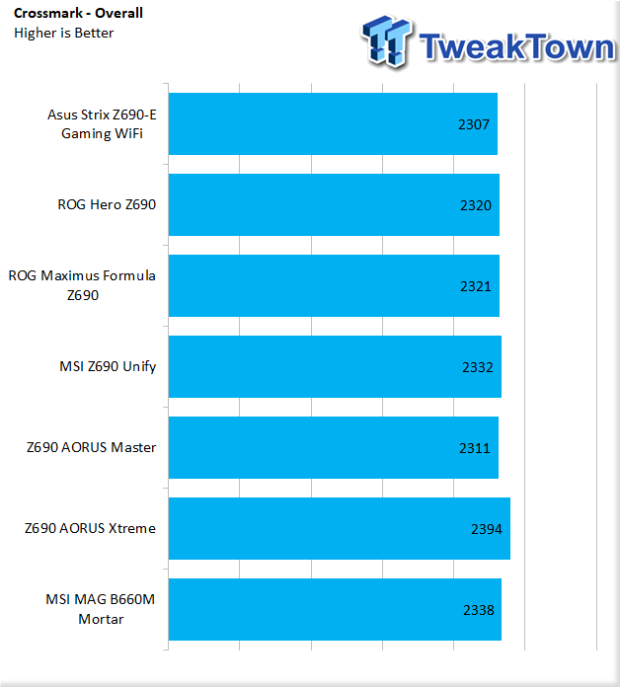
MAG Mortar landed at 2338, our second-highest score to this point, behind only the Xtreme from AORUS.
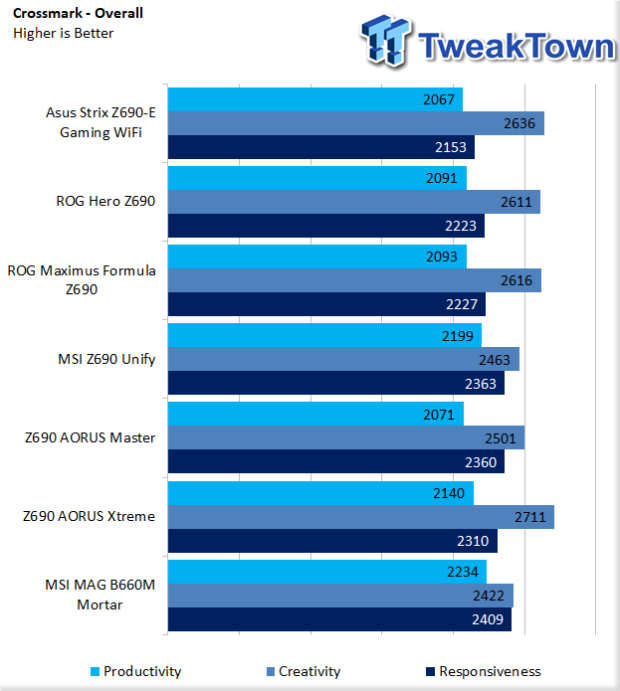
In the breakdown, we see the B660 led the pack in Productivity and Responsiveness while lagging in Creativity.
3DMark
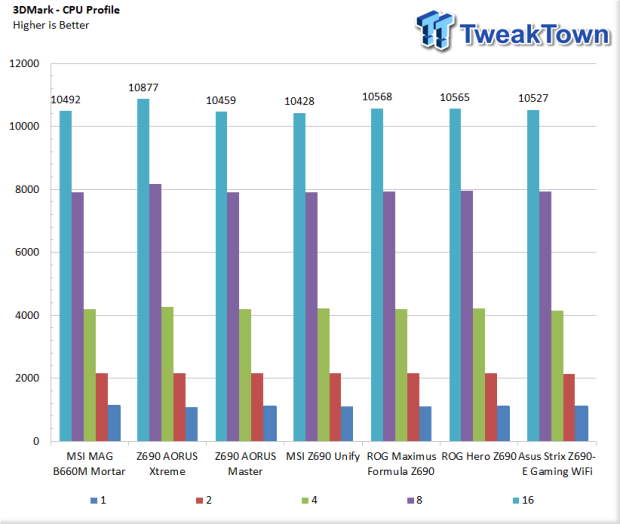
CPU Profile put the B660 at the bottom side of the pack. At 16-threads, we scored 10492, similar to what we found on the Unify and Master Z690 boards.
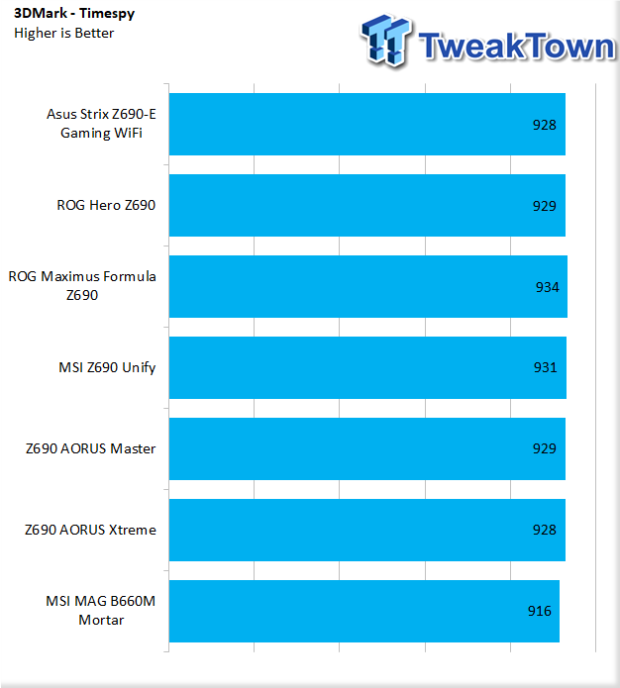
Timespy showed lower gaming performance for the B660, 18 points behind the highest performing board, the Maximus Formula Z690.
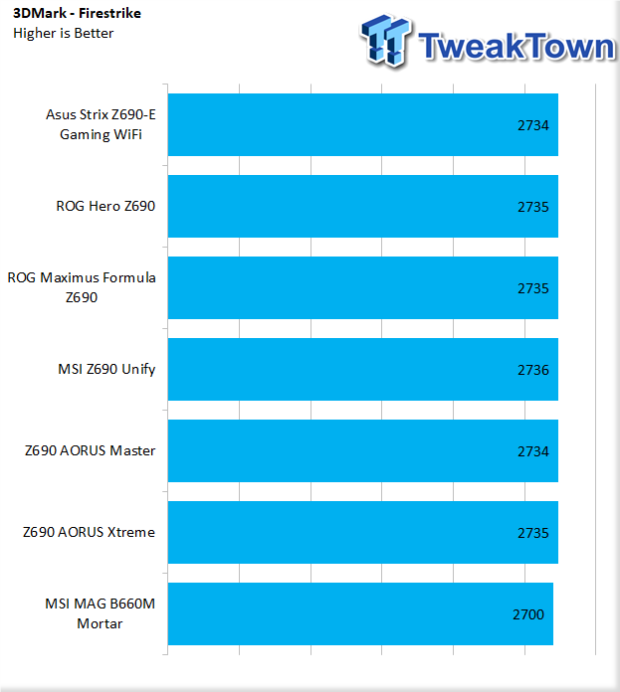
Firestrike once again shows lower gaming performance from the B660, 35 points under the Z690 platform.
Storage Benchmarks and Final Thoughts
3DMark Storage Benchmarks
UL's newest 3DMark SSD Gaming Test is the most comprehensive SSD gaming test ever devised. We consider it superior to testing against games themselves because, as a trace, it is much more consistent than variations that will occur between runs on the actual game itself. This test is, in fact, the same as running the actual game, just without the inconsistencies inherent to application testing.
In short, we believe that this is the world's best way to test an SSDs gaming prowess and accurately compare it against competing SSDs. The 3DMark SSD Gaming Test measures and scores the following:
- Loading Battlefield V from launch to the main menu.
- Loading Call of Duty Black Ops 4 from launch to the main menu.
- Loading Overwatch from launch to the main menu.
- Recording a 1080p gameplay video at 60 FPS with OBS (Open Broadcaster Software) while playing Overwatch.
- Installing The Outer Worlds from the Epic Games Launcher.
- Saving game progress in The Outer Worlds.
- Copying the Steam folder for Counter-Strike Global Offensive from an external SSD to the system drive.
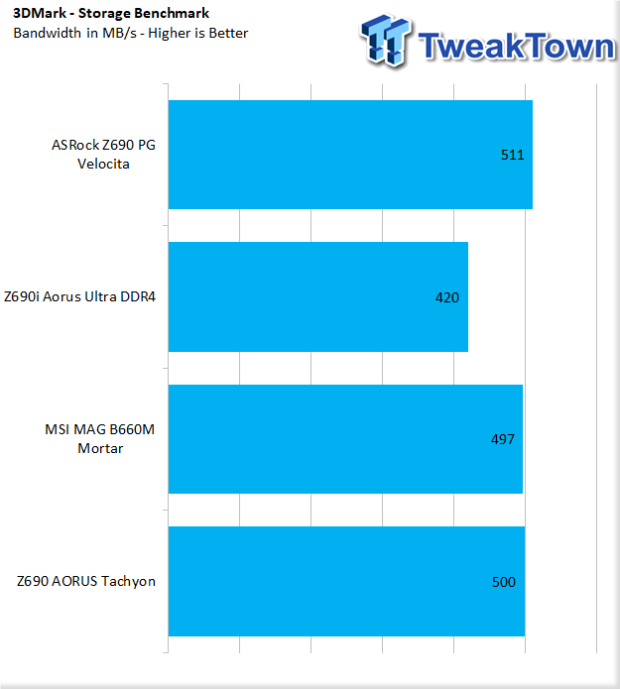
We tested several platforms to get an idea of where our Rocket Plus performs in this benchmark. The B660, surprisingly, did very well, giving us a bandwidth score of 497 MB/s.
Final Thoughts
B660 should be a fantastic addition to motherboard lineups depending on vendor choices. For MSI, the MAG B660M Mortar is a well-made solution that sports enough connectivity between USB 2.0 and USB 3.2 for most consumers to be happy. I do like that 2.5Gbe has stayed on as a platform feature with B660 and enjoy that MSI has added Wi-Fi even if it's the older Wi-Fi 6 standard and not 6e.
In testing, the B660M was right with our tested Z690 platforms in CPU-intensive tasks. Memory throughput was one place we saw lower performance just from the disparity between DDR4 and DDR5.
3DMark Timespy and Firestrike did show lower overall performance, with the B660 offering on average 35 points less than Z690. Storage performance lacked nothing, performing right with our Z690 boards in the 3DMark storage benchmark.
Overall, the B660M Mortar was a great board in testing. It carries a solid feature set with the ability to add-on Thunderbolt connectivity if ever needed while offering both Gen 2 and Gen2x2 USB 3.2 out of the box.
Pricing should put this platform within reach of more consumers, expected to be around $200, and MSI's choice to stick with DDR4 should aid gamers and the like in finding the components needed to finish their build.
Performance |
90% |
Quality |
90% |
Features |
90% |
Value |
95% |
Overall |
91% |
MSI has done a remarkable job with the B660M Mortar, offering a great feature set with USB 3.2 and 2.5GBe flanked by Wi-Fi 6, and perhaps the most important part, sticking with DDR4 on a budget-minded platform.

Similar Content
Related Tags

